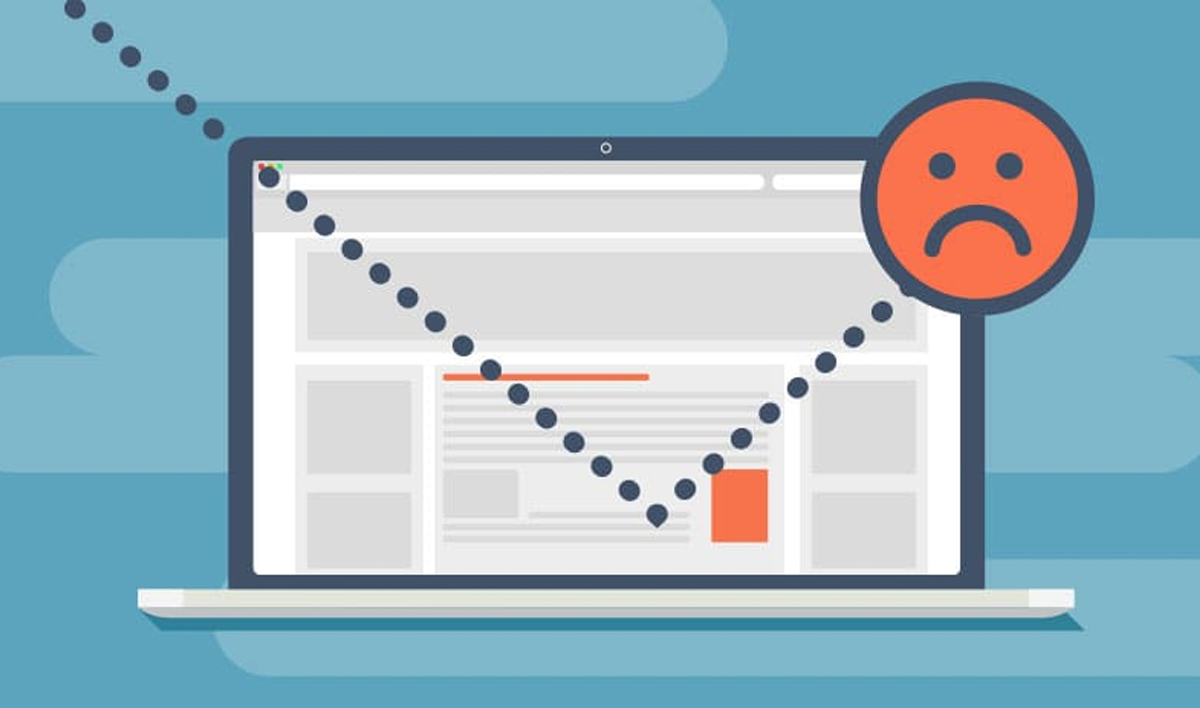Have you ever looked at a store and left it immediately? Maybe you did not like his look or you realized that there is not what you are looking for. Whatever the reason, you’ve only looked at the store for a while, after which you’ve just “deflected” from it. The same can happen on your site and this is not a good thing. A high bounce rate shows that something is deterred by visitors to your website. They quickly leave her to find a better answer to your query. Fortunately, there are proven ways to reduce this factor. Visitors will not only stay longer on your site – they will also increase the chance that they will make a purchase. Before we go to these methods, let’s look more closely at what the reflection coefficient is.
Bounce rate – what is it?
Bounce rate is the percentage of people who visited your website and left it after seeing only one page. They do not click on any internal links or react to any call to action.
In short, the visitor “bounces” from the page and does not pay too much attention to it. Although the definition itself is simple, the reasons behind this phenomenon may be more advanced. Let’s take a look at five tried and tested ways to help you reduce this value.
1. Accelerate the page load time
Many people assume that the cause of the high bounce rate is the content problems of the site. In fact, in many cases visitors do not read the page content at all, because they leave it too quickly. Long-term charging time is one of the worst problems a website can encounter. No matter how good the content is, if nobody reads it.
47% of Internet users expect the site to load in 2 seconds or less!
Some tips on how to speed up the charging time:
– Optimize graphics depending on the type of page.
– Optimize the page code.
– Choose better hosting – problems can be caused by a weak server.
2. Actually use side panels and widgets
It is difficult to find a blog that does not have any elements in the side panel – we usually find there navigation elements or links to other content.
Repackaging, however, the margin of your site with unrelated ads, rewards, badges and other unnecessary things can overwhelm the visitor and make him leave the page. If you want to emphasize some content in the side panel, do it so that it actually brings an additional benefit. Include links to related articles that broaden the topic. In this way you will attract readers to your website for longer. Similarly, if you place prizes, certificates and decorations there, let them come from the most reputable sources to actually serve their purpose.
As for the pop-ups, they obviously have their place. Properly used, they can be very effective. At the same time, however, they can distract and irritate the visitor. Give time to visitors to get acquainted with the site before you offer them to subscribe to the newsletter. Do not press too hard or too hard.
3. Improve the readability of content
A truly good user experience takes place when the content on the site is clear and easy to receive. Badly formatted content and large blocks of text effectively discourage reading. Of course, a large amount of text has a positive effect on positioning, but it is always worth keeping in mind the so-called “the Golden mean”. The preferred length of text on a given site always depends on the specificity of the text.
It’s good to adhere to the following practices when building content:
– Use headings often to divide
thematically
– Use bulleted lists when
calculating benefits or giving short tips
– Where possible, post photos,
charts and quotes from industry experts
– Bold some keywords and important fragments
Blog entries end with the heading “summary”. In this way, you encourage the reader to read the text to the end and nicely fix the whole buckle.
4. Use internal linking
Internal linking is a strategy that can effectively help eliminate a high bounce rate. An example can be websites written in the form of encyclopaedias, in which we find a lot of internal links. Of course, encyclopedic websites are governed by their own laws. The high density of links on a typical website can deter readers.
Links should be used strategically – put links to other useful articles or to the offer, if it is related to what moves the text. It is also good to place links at the end of the article – in this way, after reading the whole, the visitor will not leave the page altogether, but will be ready for the next portion of the content.
Of course, the page type is also important. On the landing page type, any links that are not call to action can harm the conversion. In this situation, it is better to get rid of them to help the reader concentrate on one activity and stay within one site.
5. Adjust pages 404
Page 404 appears when the visitor clicks the link leading to the broken and unpunched subpage within your site. It’s a good idea to customize the page so that instead of the default text, internal links and the content search tool will appear there. Generally, the site is to help the visitor find what they are really looking for or redirect to another interesting content.
Summary
The above tips can help you eliminate the high bounce rate. Remember that the more time visitors spend on your site, the greater the chance that a conversion will take place.
